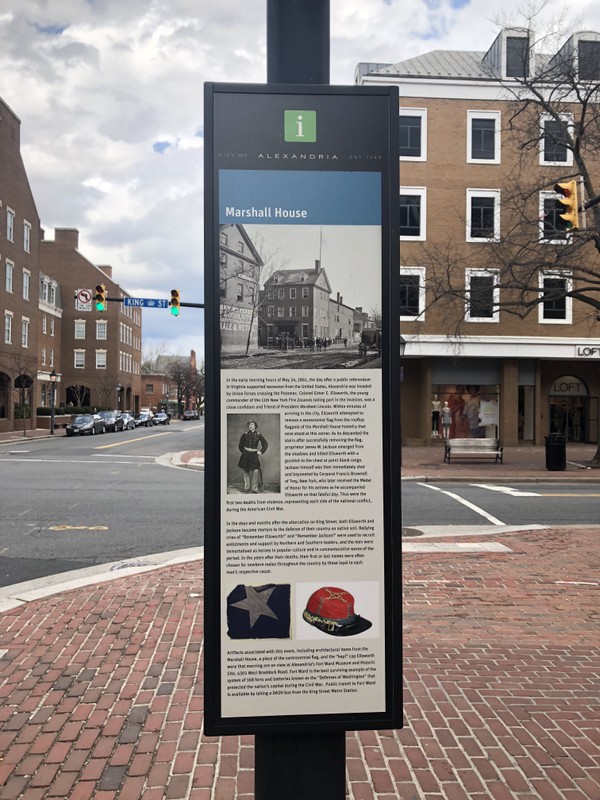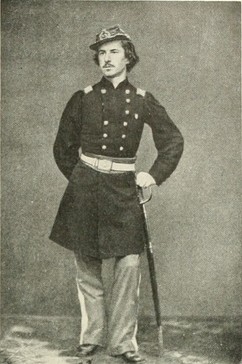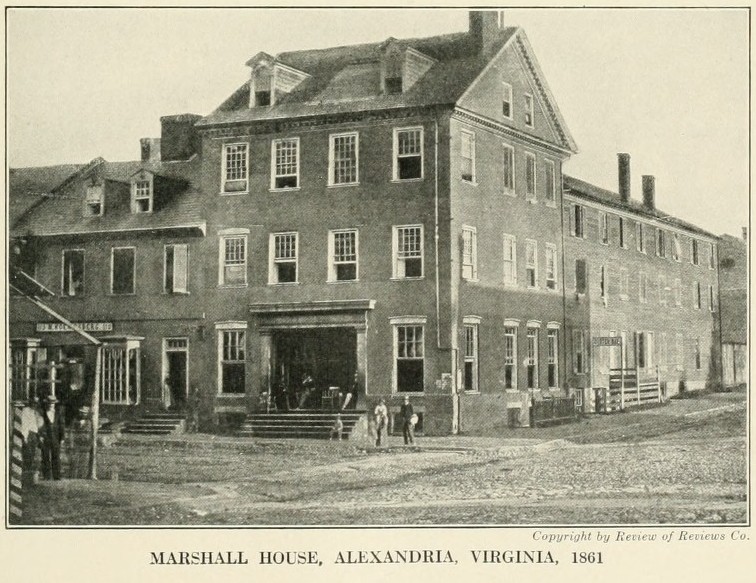Historical Marker: Colonel Ellsworth, First Union Officer Killed During the Civil War
Introduction
Text-to-speech Audio
This historical marker shares the story of Colonel Elmer Ellsworth (1837-1861), a close friend of President Abraham Lincoln and the first Union officer to be killed during the Civil War. Ellsworth and his troops of 11th New York Volunteer Regiment arrived in Alexandria on May 24, 1861 as part of the Union's takeover of the city a day after Virginia residents voted in favor of seceding. One of the buildings in the city, a hotel called the Marshall House, featured a large Confederate flag flying atop a flagpole on the roof that could be seen from the White House. Ellsworth and a group of four soldiers went to the hotel to remove it. After Ellsworth retrieved the flag, the owner of the hotel ardent supporter of slavery, James W. Jackson, shot and killed Ellsworth at point blank range as Ellsworth and the others descended the staircase. One of the soldiers, Francis E Brownell, then immediately shot Jackson (he later received the Medal of Honor for his actions). Ellsworth died immediately on May 24, 1861. The Marshall House was torn down around 1950 and stood where The Alexandrian Hotel is today.
Images
This historical marker describes the incident at the Marshall House.

Colonel Elmer Ellsworth (1837-1861) was the first Union officer to be killed in the Civil War

The Marshall House was torn down around 1950.

Backstory and Context
Text-to-speech Audio
Elmer E. Ellsworth was born on April 11, 1837 in Malta, New York and remained there until moving to Mechanicville, New York in 1847. He made his way to New York City sometime in the next few years and got a job working in a linen shop. In the late 1850s he was in Chicago working as a clerk in a law office and joined a local militia, the National Guard Cadets. He became its major and soon transformed it into the United States Zouave Cadets, which was modeled after the French Zouaves (Algerian infantry regiments of the French army who wore colorful uniforms). In 1860, Ellsworth moved to Springfield, Illinois to work for and study law under Abraham Lincoln. He helped Lincoln during the 1860 presidential campaign and moved to Washington D.C. to work in Lincoln's office. Ellsworth formed the 11th New York Volunteer Regiment shortly before the Civil War began. His soldiers wore Zouave-style uniforms and most of them came from the New York City's fire departments, earning them the nickname "Fire Zouaves."
Ellsworth was taken to the Washington Navy Yard where Lincoln and Mary Todd Lincoln viewed his body. Lincoln reportedly said "My boy! My boy! Was it necessary this sacrifice should be!” His body was then taken to the White House to lay in state and then buried in Hudson View Cemetery in Mechanicville. The deaths of both he and Jackson became rallying cries for the Union and the Confederacy. The flag Ellsworth removed from the flagpole was apparently given to Mary Todd Lincoln, who put it in a drawer. A piece of it, and Ellsworth's uniform cap, are housed at the Fort Ward Museum.
Cite This Entry
M., Ben and Clio Admin. "Historical Marker: Colonel Ellsworth, First Union Officer Killed During the Civil War." Clio: Your Guide to History. March 5, 2023. Accessed January 5, 2025. https://theclio.com/tour/947/24/reverse
Sources
"The Death of Colonel Ellsworth." Smithsonian Magazine. April 2011. Accessed February 28, 2023. https://www.smithsonianmag.com/history/the-death-of-colonel-ellsworth-878695.
"Elmer Ellsworth." National Park Service. Last Updated June 17, 2015. Accessed February 28, 2023. https://www.nps.gov/people/elmer-ellsworth.htm.
Goodheart, Adam. 1861: The Civil War Awakening. New York, NY: Vintage Books, 2012.
"Notable Visitors: Elmer Ellsworth (1837-1861). Mr. Lincoln's White House. Accessed February 28, 2023. http://www.mrlincolnswhitehouse.org/residents-visitors/notable-visitors/notable-visitors-elmer-ellsworth-1837-1861.
Historical Marker Database
Wikimedia Commons


